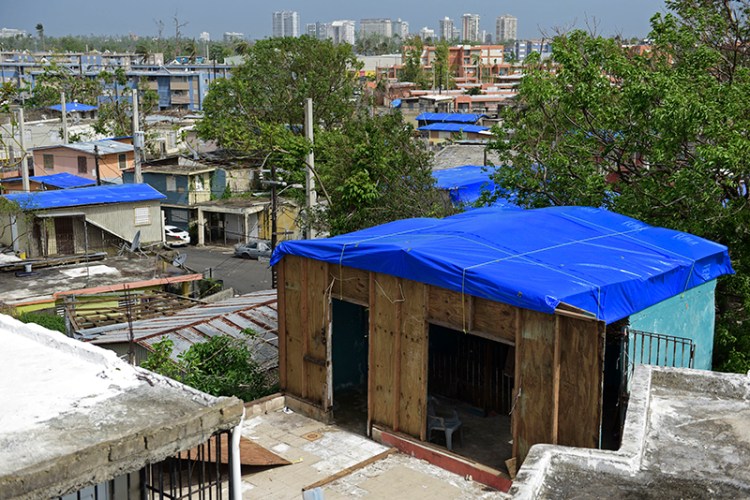The Federal Emergency Management Agency experienced personnel shortages, was caught with a critical lack of aid supplies, had trouble coordinating logistics and found itself struggling to do the work of the territorial government while responding to Hurricane Maria’s devastation in Puerto Rico last September, according to an official after-action report released late Thursday.
Despite repeated Trump administration efforts to play down federal failures in responding to a humanitarian crisis on the island territory, the new report is a public acknowledgment of systemic failures during what was one of the most destructive hurricane seasons – and costliest disaster responses – in the nation’s history.
It shows that responses to Hurricane Harvey in Texas and Hurricane Irma in Florida taxed the agency and left it understaffed and out of position for the catastrophe that unfolded in Puerto Rico, where millions of U.S. citizens suffered through widespread communication blackouts, massive infrastructure failures and lengthy power outages.
https://cloudup.com/cvSiPLFEz4H
FEMA officials said Thursday that the responses to back-to-back mainland hurricanes sapped federal disaster resources and left an extraordinarily short window to prepare and build up for Maria. Once Maria hit, they said, they had difficulties with logistics and had a hard time coordinating with local officials in Puerto Rico, who were themselves victims of the storm.
The sobering report runs counter to the White House narrative that President Donald Trump presented at the time, when he praised FEMA’s performance and characterized the devastation on the island as not being “a real catastrophe like Katrina.”
The three major hurricanes that made landfall on U.S. soil – along with wildfires and other natural disasters – ravaged the country and its territories in 2017, affecting nearly 50 million Americans and U.S. nationals spread across the South, West and Caribbean. The disasters cost nearly $300 billion, according to FEMA estimates.
In Puerto Rico, the Category 4 Hurricane Maria knocked out communications and left more than 3.5 million residents without power for months while FEMA scrambled to provide food and water and restore electricity. Resources that had been redirected to deal with Hurricane Irma in the U.S. Virgin Islands left few supplies for Puerto Rico when the hurricane hit – and communication lapses, transportation challenges and a lack of situational awareness caused major delays in help for those living on the island.
The inability to communicate, or to reach isolated areas of Puerto Rico, was a particular problem. FEMA officials conceded that in the first 72 hours after the hurricane, they had little understanding of what was happening across the island and could not assess road conditions or damage to water and wastewater facilities. A week after the hurricane made landfall, according to the report, officials had been able to assess about half of the island’s wastewater treatment sites and did not have information on the status of 37 out of 69 hospitals.
“Because FEMA and its partners lacked situational awareness early in the response, the Agency initially could not be certain that FEMA and interagency partner efforts were sufficient to stabilize the incident,” according to the report.
FEMA administrator William “Brock” Long wrote in a letter included in the report that emergency managers at all levels of government need to improve their emergency plans to account for the shortfalls that led to coordination and logistical breakdowns. Sounding a warning he has repeated since the disasters, Long said communities must be better prepared for emergencies, and he acknowledged that his agency must streamline procedures to provide better services.
“These disasters demonstrate that our current organizing structures are insufficient to promote this collaboration,” Long wrote.
Copy the Story LinkSend questions/comments to the editors.



Success. Please wait for the page to reload. If the page does not reload within 5 seconds, please refresh the page.
Enter your email and password to access comments.
Hi, to comment on stories you must . This profile is in addition to your subscription and website login.
Already have a commenting profile? .
Invalid username/password.
Please check your email to confirm and complete your registration.
Only subscribers are eligible to post comments. Please subscribe or login first for digital access. Here’s why.
Use the form below to reset your password. When you've submitted your account email, we will send an email with a reset code.